
Original artwork courtesy of Kathleen Konicek-Moran, NPS volunteer Although bromeliads reach their highest diversity in the tropics of Central and South America, quite a few species are native to Florida and the Everglades. All bromeliads are in the pineapple family (Bromeliaceae), which includes both epiphytes (non-parasitic plants that grow on other plants) like cardinal airplant (Tillandsia fasciculata) and terrestrial species that take root in the ground, such as the pineapple (Ananas comosus). 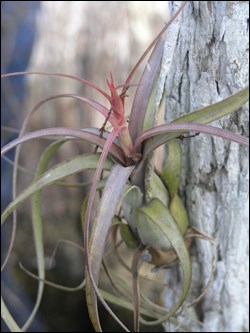
NPS photo The vast majority of the bromeliads you will see in Everglades National Park are in the genus Tillandsia. These bromeliads are commonly known as airplants or wild pine. Most Tillandsia species look like the top from a pineapple, but some, like Spanish moss (T. usneoides), form cascading colonies made up of thousands of interconnected individual plants. All of the species of Tillandsia in the park have silvery green leaves. The park also is home to two species of Catopsis and one species of Guzmania, all three of which stand out due to their soft, bright green leaves. 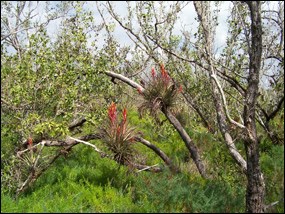
NPS photo by Jimi Sadle Bromeliads are one of the iconic resources of the park. They are found in almost all habitats and in some places their numbers can seem overwhelming. Dwarf cypress forests and cypress domes are excellent habitat for airplants, which also are common in the interior of hardwood hammocks and tree islands as well as in mangrove forests. Lone trees in the middle of sawgrass marshes and other wetlands typically support resident bromeliads. Several species of Tillandsia even perch on the branches of planted trees in most of the parking areas throughout the park. Bromeliads and Other Organisms 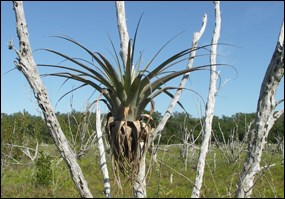
NPS photo by Jimi Sadle The leaf bases of some bromeliads, like the giant airplant (T. utriculata), catch and hold water as a way of dealing with dry conditions. These tank bromeliads provide a nearly continuous water source that is used by a wide range of animals. A careful look down into the leaf bases may reveal a tree frog, mosquito larvae, centipedes, or even a snake. 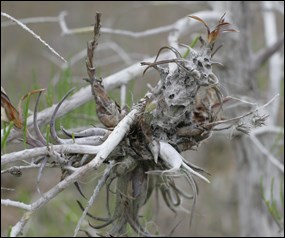
NPS photo by Jimi Sadle Some of the other bromeliads in the park don't hold water but have leaf bases that form a hollow chamber. These chambers provide a favorite home for acrobat ants (Crematogaster sp.). It is thought that the bromeliad gets nutrients from the ant waste in exchange for providing the ants with shelter. 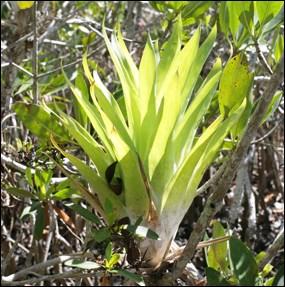
NPS photo by Jimi Sadle Not all relationships are quite so friendly. The leaf bases of powdery catopsis (Catopsis berteroniana) are covered with fine, loosely attached scales. Insects trying to get to the water at the bottom of the leaf base may lose their grip, slip into the water, and drown. This has led some researchers to hypothesize that powdery catopsis may actually be a carnivorous plant! Bromeliads and Exotic Species 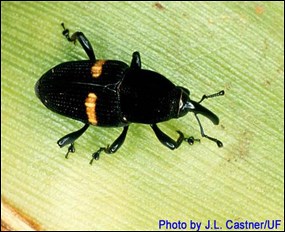
Photo courtesy of J.L. Castner, University of Florida In 1989, scientists first detected the Mexican bromeliad weevil in south Florida. The larvae of this species develop by feeding on the tissue in the center of bromeliads, including the larger native Tillandsia species. Unfortunately, this introduced pest can quickly decimate large bromeliad populations. The Mexican bromeliad weevil was reported in the park shortly after its discovery in the United States, but it has not been seen again since the early 1990s. Hopefully this disastrous invader will remain scarce. About the Illustrations The vibrant, detailed botanical illustrations on this page and others are by NPS volunteer and artist Kathleen Konicek-Moran. Kathleen has graciously allowed Everglades National Park to use her original works to help convey the vital connections inherent within the Everglades ecosystem. Learn more about Kathleen Konicek-Moran and what inspires her bountiful flow of creativity. |
Last updated: July 23, 2015
